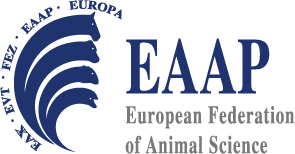Session 29. Genetics, physiology, and behaviour of insects
<< Back to the Session index of Porto 2022
Theatre
Development rate variation in insects: what we currently understand
C.J. Picard
Defining a founding population: evaluating the genetic diversity in a BSF commercial line
E.M. Espinoza
Influence of strain genetics on larval performance and bioconversion efficiency of Hermetia illucens
Broeckx,L. Frooninckx, S. Berrens, A. Wuyts, C. Sandrock and S. Van Miert
The reproductive tract of the black soldier fly (Hermetia illucens) plays with sexual selection
Bressacand C. Labrousse
A sweet smell: a search for the perfect attractant for female black soldier fly (Hermetia illucens)
Deruytter,C.L. Coudron, A. De Winne and M. Van Der Borght
Mating compatibility among different Tenebrio molitor strains
Adamaki-Sotiraki,D. Deruytter, C.I. Rumbos and C.G. Athanassiou
Prospects of manipulating sex ratios of commercial insect populations
L.W. Beukeboom, L. Francuski, G. Petrucci, S. Ter Haar, A. Rensink and S. Visser
An extensive multi-approaches distribution map of Apis mellifera mitochondrial DNA lineages in Italy
Taurisano,V.J. Utzeri, A. Ribani and L. Fontanesi
Deciphering the genetic architecture of honey production in a selected honeybee population
M.G. De Iorio, J. Ramirez-Diaz, S. Biffani, G. Pagnacco, A. Stella and G. Minozzi
Poster
High-density SNP development in black soldier fly via throughput DNA pool sequencing
Donkpegan,A. Guigue, F.X. Boulanger, S. Brard-Fudulea, P. Haffray, M. Sourdioux and R. Rouger
Haemolymph analysis as a potential method to assess the quality of insect nutrition
Gałęckiand T. Bakuła
Identification of selected haemocytes in the haemolymph of the mealworm (Tenebrio molitor)
Gałęckiand T. Bakuła
















